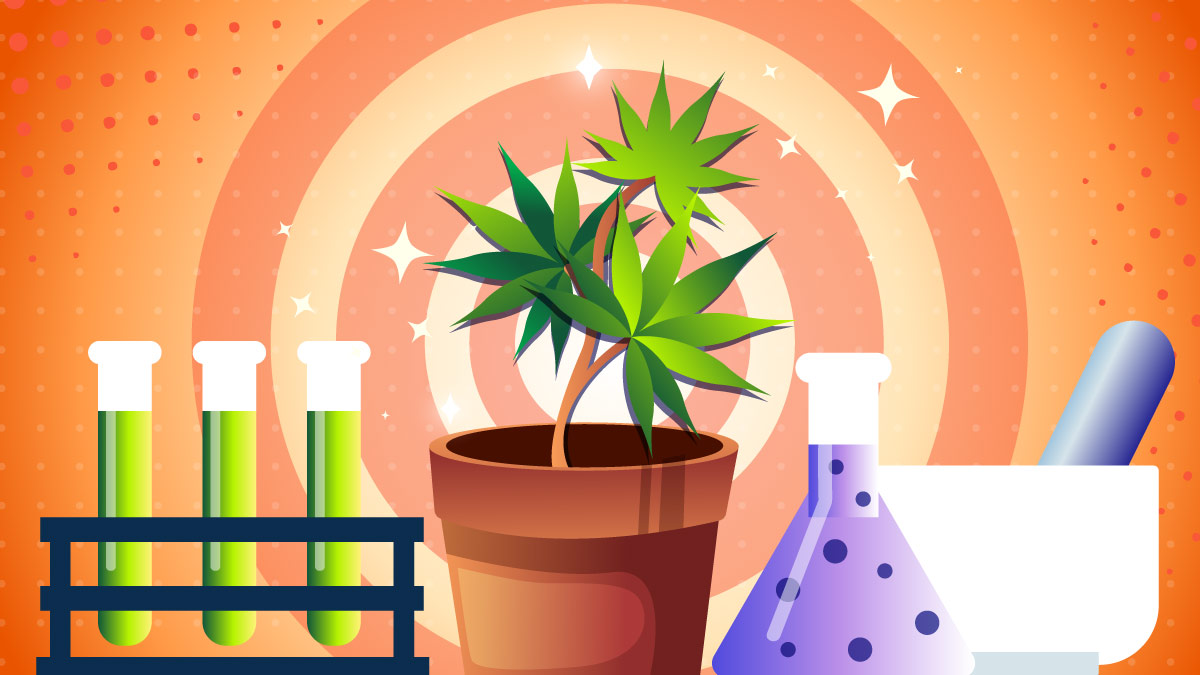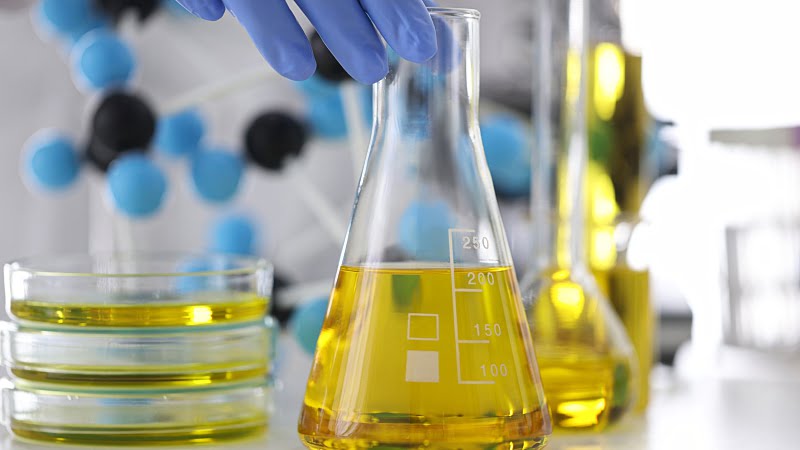How to Extract CBD Oil: Different Methods That Works Best

CBD can be extracted with a few different methods.
Wondering how your CBD oils are made? You’ve come to the right place.
CBD extraction is an advanced process that requires many skills and high-tech equipment to yield clean and potent products. Without extraction, the CBD space would revolve around hemp flowers, limiting diversity in the cannabis industry to a great extent.
Can you imagine the cannabis market without oils, gummies, vapes, capsules, and topicals?
Neither can we.
Today, we’ll elaborate on how to extract CBD from hemp plants, compare different extraction methods, touch down on their pros and cons — and pick the best technology for making safe CBD oils on a broad scale.
How Is CBD Extracted?
CBD can be extracted from cannabis plants, meaning you can use both hemp and marijuana for extraction.
The source of CBD determines the chemical profile of the end product and has a profound impact on its legality.
Hemp-derived CBD oils have less than 0.3% of THC and thus can’t get the user high. The lack of intoxicating effects makes hemp plants and their derivatives legal on a federal level. You can buy them in all 50 states without a prescription.
Marijuana, on the other hand, comes with significant concentrations of THC — usually upwards of 10% — which is enough to induce intoxication. The federal law still holds THC on the list of controlled substances, making marijuana illegal on a federal level. Individual states can interpret these laws independently; so far, 16 states have fully legalized marijuana, while 48 states have some sort of a medical marijuana program.
As mentioned, there are several ways to extract CBD from hemp.
Let’s start with the golden standard — CO2 extraction.
CO2 Extraction
CO2 behaves like a gas; however, this can be easily changed when you use different pressure levels and temperatures.
CO2 extraction yields optimal results in terms of the product’s potency and preserved phytochemical profile. When the temperature of CO2 gets below -69 F, with pressure levels above 75 PSI, it turns into a supercritical state.
Supercritical CO2 can fill an extraction chamber where the plant material is contained, being just the perfect solvent. It results in a clean product with consistent concentrations of CBD and terpenes throughout the batches.
The carbon dioxide efficiently pulls the desired compounds by breaking up the trichomes in the extraction vessel, leaving away insoluble molecules.
Then the manufacturer uses a separator and splits the extract into individual compounds. Once there, CBD and other cannabinoids, terpenes, and flavonoids are sent back to the collection container. Meanwhile, CO2 leaves the extraction chamber condensed into a liquid form and transferred to a special storage tank for future operations.
CO2 Extraction Equipment
The CO2 extraction equipment includes multi-chamber machines that use special pumps forcing supercritical CO2 into the extraction vessel where it interacts with the plant and breaks the trichomes, dissolving part of the plant material. These machines are costly; they usually cost around $150,000, which is the main reason why CO2-extracted CBD oils are more expensive than products obtained with other solvents, such as alcohol.
Ethanol Extraction
Ethanol extraction is one of the least expensive methods to extract CBD from hemp. Alcohol is generally considered safe, although purging it from the final product requires caution and precision on the manufacturer’s part; otherwise, it can trigger explosions.
Alcohol extraction requires soaking the hemp plant in ethanol. The liquid will run through the plant matter, stripping it from the valuable compounds along with chlorophyll. Once the solvent has gathered enough cannabinoids and terpenes, the liquid is strained and then heated in a special dish. After evaporation, the extract is suspended in a carrier oil to thin it down and improve its bioavailability.
Just keep in mind that ethanol is highly flammable, and you should never extract CBD this way at home unless you can ensure the necessary safety measures.
Ethanol Extraction Equipment
Ethanol extraction is usually employed by small-scale manufacturers because it doesn’t involve such heavy financial investments as CO2 extraction. Ethanol extraction equipment involves a professional decarboxylator, large storage tanks where the plant matter can soak in alcohol, industrial strainers, a gentle heating machine, and storage containers that will contain the extracts before they are infused into the carrier oil and bottled up.
Let’s compare the efficacy and safety of both extraction methods.
CO2 vs. Ethanol Extraction
Ethanol is called a “polar” solvent, and as such, it will be more hydrotropic, meaning it will attach to more water-soluble compounds like chlorophyll. Consequently, the final product is generally less potent and pure — requiring more post-labor than CO2 extraction.
People advocating for ethanol extraction usually argue that these downsides can be avoided using very cold temperatures below -5F. While this is true, the process becomes more time-consuming and less efficient if the manufacturer wants to scale up its operations.
Properly performed CO2 extraction can still maintain many of the plant’s phytonutrients, not to mention that it can continuously yield potent products.
Other Ways to Extract CBD

The idea behind CBD extraction is to pull the desired phytochemicals from the plant matter and transform it into a viscous liquid full of cannabinoids, terpenes, flavonoids, fatty acids, vitamins, and minerals.
Although CO2 and ethanol are the most popular solvents, they aren’t the only ones. As mentioned, there are several ways to capture these valuable compounds, including:
- Dry Ice Extraction
- Hydrocarbon Extraction
- Vegetable Oil Extraction
Dry Ice Extraction
The dry ice method is one of the best ways to extract CBD at home. However, it requires more time than CO2 extraction or organic solvent extraction.
The dry ice strips CBD and other phytonutrients from the plant material. It’s a relatively inexpensive method of making high-quality CBD hash without using aggressive solvents.
Solventless extraction always produces cleaner extracts than solvent-based methods — not to mention that using dry ice brings a lot of fun to home extraction
How to Extract CBD Using Dry Ice
Equipment:
- 3 lbs of dry ice
- A large mirror or plexiglass sheet
- Heat-resistant gloves
- I goggles
- A putty knife
- A clean 5-gallon bucket
- 3 bags of bubble hash mesh (73, 160, and 220 microns)
- 3 large jars with lids
Dry Ice Extraction (Step-by-Step)
Put on the gloves and goggles. Next, grind your CBD buds into smaller pieces and place them in the bucket.
Cover the CBD buds with dry ice, leaving them there for 3 minutes. Make sure you only fill the bucket halfway. Doing so will freeze the resin so the trichomes can be separated from the plant material and transferred to the special mesh bags.
Fold each bag over the bucket with your CBD and dry ice, and shake it several times to cause the trichomes to fall off from the plant.
Turn the container upside down on the mirror and continue shaking to collect as much of the resin as possible. Once you’ve gathered the hash of the mirror, you can place it in one of the jars.
Do the same with the remaining bags and be proud of your homemade dry-ice CBD hash.
Hydrocarbon Extraction
Hydrocarbon compounds include substances like propane, butane, and hexane. These solvents are relatively inexpensive, but they’re difficult to purge from the end product and thus can leave toxic residue at the bottom of the extract.
Hydrocarbon extraction requires soaking the hemp plant in the solvent. The liquid runs through the biomass, pulling the cannabinoids and terpenes from the flower along with water-soluble compounds such as chlorophyll.
Once the solvent has extracted enough phytochemicals, it is heated in a special dish to evaporate it and create a thick liquid.
Vegetable Oil Extraction
CBD can be easily extracted at home using vegetable cooking oils. These oils act as solvents, but the whole process follows similar rules as all other extraction methods.
Any common cooking oil can be used for this kind of extraction, including:
- Butter/ghee
- Coconut oil
- Hemp seed oil
- Argan oil
- MCT oil
- Sunflower oil
- Sweet almond oil
- Olive oil
If you want to extract CBD for homemade edibles, it’s best to go with a product with the highest amount of saturated fats, as they significantly improve the bioavailability of cannabinoids. People typically choose butter and coconut oil for cooking with CBD, while for salves and creams, argan oil and sweet almond oil are the most common choices.
How to Extract CBD with Cooking Oils
Cooking oil extraction is pretty straightforward. First, you need to decarboxylate your dried CBD in the oven. Set up the heat at 250 F and bake the flowers for 30-60 minutes, depending on how dry they are.
Then you combine the decarbed herb with the oil in a saucepan or slow cooker and slowly heat the mixture to gently simmers. Maintain the low heat and keep the CBD infusion for up to 2 hours.
Once done, strain the liquid from the plant matter and place it in a glass jar. You can keep it in a fridge for up to 6 weeks.
Why Is Decarboxylation Important for CBD Extraction?
Most CBD products are decarboxylated, which involves heating the CBD buds to transform the acidic precursor of CBD into its active version.
If you’ve ever cooked something with cannabis, you should know the process very well.
Decarboxylation, also known as decarbing, removes an extra carboxyl group from CBDA (the acid form of CBD), allowing it to interact with the endocannabinoid system immediately.
If you see a CBD product labeled as “raw,” it means it hasn’t been decarboxylated.
Final Thoughts: What’s the Best Way to Extract CBD?
Knowing how CBD is extracted allows you to evaluate the efficacy of different products based on the solvents used in the process.
People have been extracting cannabinoids from cannabis plants for hundreds, if not thousands of years, to use them for therapeutic purposes. Thanks to the current scientific breakthroughs, we can enjoy a wide range of cannabinoid-based extracts with a lot to offer in terms of their therapeutic properties.
Some extraction methods are superior to others when it comes to broad-scale manufacturing. CO2 extraction is currently the golden standard because it yields the purest products without bringing water-soluble compounds such as chlorophyll.
It does, however, require higher costs when it comes to equipment and lab workers, which is why some manufacturers turn to ethanol as their go-to solvent.
If you want to perform CBD extraction at home, you can either go with a solvent-based method — using cooking oils — or take a solventless approach and use dry ice to capture the desired compounds into DIY CBD hash.